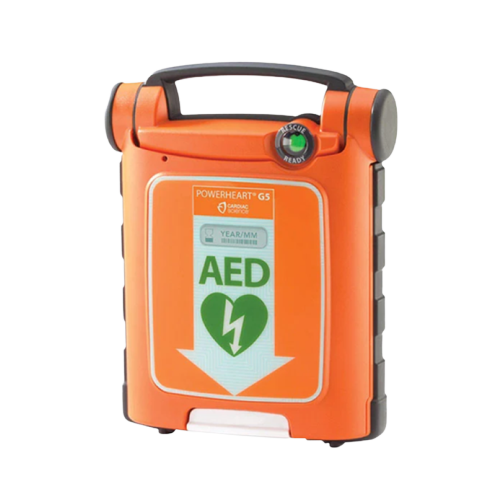Automated external defibrillator

What is an AED Machine?
An Automated External Defibrillator (AED) is a compact and portable device specifically designed to address sudden cardiac arrest (SCA) situations. Sudden cardiac arrest occurs when the heart’s rhythm becomes irregular or chaotic, leading to a complete cessation of effective pumping of blood to the body. In such critical moments, an AED machine plays a crucial role in restoring a normal and healthy heart rhythm.
The AED operates by delivering a precisely controlled electric shock to the heart. This carefully administered electric shock is intended to momentarily halt the heart’s activity, allowing its electrical system to reset and resume its normal function. The purpose of this temporary interruption is to interrupt any irregular or disorganized electrical signals within the heart and facilitate the restoration of its natural rhythm.
When an AED is turned on and connected to a person in cardiac arrest, it assesses the heart’s rhythm and determines if a shock is necessary. If a shock is needed, the AED delivers a controlled electric current through electrodes placed on the person’s chest, which can help restore a normal heart rhythm.
Yes, AEDs are designed to be safe and effective when used properly. The devices are equipped with built-in safety features that analyze the heart rhythm and deliver a shock only when needed. Voice prompts and visual cues provided by the AED guide users through the process, ensuring correct usage.
AEDs should be strategically placed in easily accessible locations, AEDs can be placed in large areas such as schools, workplaces, airports, gyms, and public areas where large numbers of people gather. Quick access to an AED can significantly improve the chances of survival for someone experiencing sudden cardiac arrest.
Yes, AEDs require regular maintenance to ensure they are in proper working order. This includes routine checks of battery life, electrode pad expiration dates, and conducting regular self-tests as recommended by the manufacturer. It’s important to follow the manufacturer’s guidelines and replace any expired or damaged components promptly.
Some insurance plans or organizations may cover the cost of purchasing and maintaining AEDs. It is advisable to check with your insurance provider or relevant authorities to understand the coverage options available.
Yes, some AED models have pediatric settings or child-specific electrode pads that can be used for children under a certain age or weight. It is important to follow the instructions provided with the AED and consult medical professionals for guidance on using AEDs on children.
